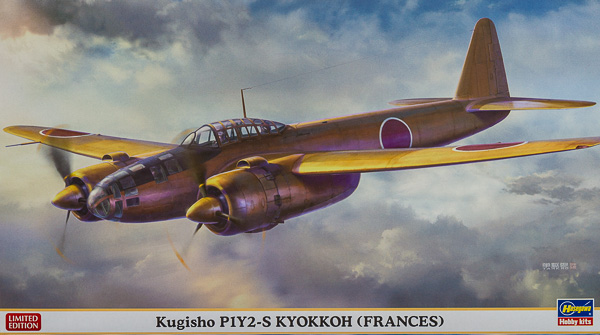
Hasegawa 1/72 Kugisho P1Y2-S Kyokkoh (Frances)
By Chris Banyai-Riepl
Overview
At the beginning of the Second World War, the Japanese Navy issued a specification that called for a bomber that was as fast as the Zero fighter, with the range of the Betty bomber, and be able to dive-bomb and be a torpedo carrier. This all-in-one concept inevitably led to delays, a problem which was further exacerbated by the lack of the Nakajima engines. First flown in 1943, the Kugisho P1Y1 soon saw replacement of the Nakajima engines with Mitsubishi engines, resulting in the P1Y2. The aircraft operated in China and the Philippines, and some were converted into night fighters. The last organized effort by P1Y aircraft was in the role of kamikaze attacks late in 1945.
The Kit
Hasegawa's 1/72 kit was a welcome release when it arrived in the mid-1990s, providing a much-needed upgrade to the 1970s era Revell kit (which is quite good, just not up to par to a modern kit). Re-released over the years in many guises, the latest is this boxing for the P1Y2. As the boxtop shows the aircraft in its prototype coloring, of course the kit has to be molded to match, so we get a bunch of bright orange parts in the box, along with markings for two options. The kit has recessed panel lines throughout, and a simple yet logical construction that should make this a quick build out of the box.
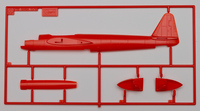
|
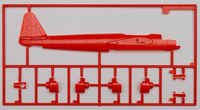
|
Jumping into the build with the interior, this is typical 1990s Hasegawa. All the shapes are there, but there's no molded detail to speak of. You have a small floor with a three-piece rear bulkhead assembly, a seat that needs seatbelts, and a control wheel. Decals provide all the sidewall and instrument panel details. This small floor fits onto a larger floor that includes the forward section (consisting of a seat) and a rear section (also consisting of a seat). The canopy is fairly small and heavily framed, so perhaps this will be sufficient with the addition of some painted details like belts. But for those who want to have a more detailed interior, you'll want to track down something like the Eduard photoetch set.
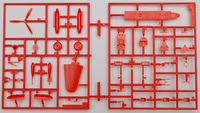
|
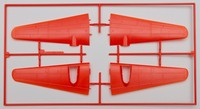
|
Once the sparse interior is together, you can put the fuselage halves together and turn your attention to the wings. These are split into upper and lower halves, and have the upper section of the wheel wells provided separately. The engine nacelles are a bit more complex, with a two-piece rear section mating up with an exhaust piece, engine face, crankcase front, and front cowling. On this goes a two-piece upper scoop and a one-piece lower scoop. The finished nacelles then mate up to the wings and if all goes well you'll have a solid fit needing little filler.

|
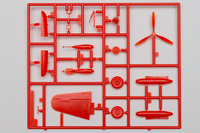
|
The wings mount to the fuselage with a sturdy set of pegs, as do the stabilizers. The rest of the assembly is all the small bits. The landing gear features separate oleo scissors and retraction arms, with the main wheels split in halves. The tail wheel has two options, one with doors and one fixed. There are two underwing drop tanks, should you wish to show your model outfitted with those. And with that, you're ready for paint.
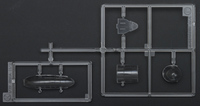
|
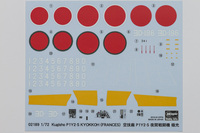
|
Painting the first scheme is quite easy, as it is the P1Y2-S prototype aircraft and thus finished in overall orange. There is a black anti-glare panel on the nose, but other than that this is just a big orange plane. The second option is an operational aircraft from the 2nd Squadron, 302nd Naval Flying Group. This plane is camouflaged in green over silver and carries typical operational markings such as yellow wing leading edges and diagonal lines on the stabilizers. The decals are nicely printed and include extra numbers should you opt to do a different aircraft.
Conclusion
For those looking to add a P1Y to their shelves, this is the kit to get. With the addition of some photoetch in the interior you could have a stunning model. My thanks to Hasegawa USA for the review copy.
